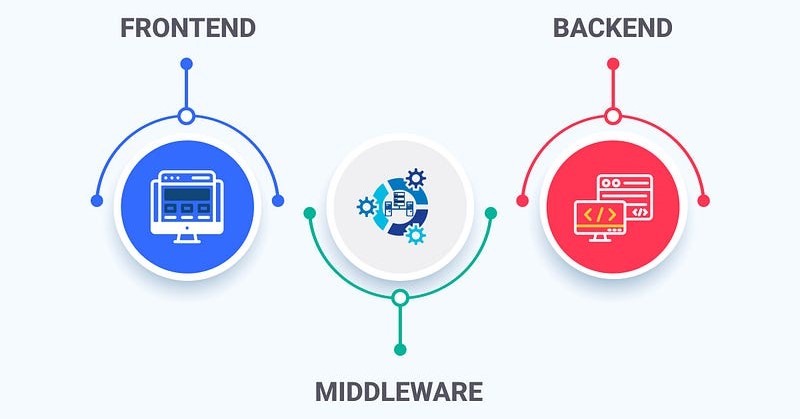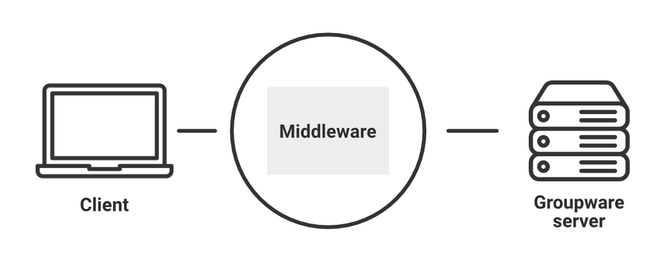Mastering Backend Development: A Comprehensive Exploration of Middleware
 Nishant Tomer
Nishant Tomer
Introduction
In the intricate ecosystem of backend development, the seamless flow of data and efficient processing of requests and responses are pivotal. Middleware, acting as the silent architect behind the scenes, plays a fundamental role in enhancing functionality, bolstering security, and streamlining workflows. This comprehensive guide aims to provide a nuanced understanding of middleware, delving into their significance, diverse types, and the varied applications that make it indispensable in modern backend development.
Understanding Middleware:
Middleware serves as an intermediary between a web application and the server, intercepting and processing requests and responses. These modular components allow developers to inject custom logic into the request-response cycle, addressing various concerns such as authentication, authorization, logging, and error handling.

Types of Middleware:
Authentication Middleware:
Verifies user identity during the request phase, ensuring only authenticated users gain access to protected resources.
Examples include JSON Web Token (JWT) verification and OAuth token validation.
Authorization Middleware:
Enforces access control policies based on user roles and permissions, determining user authorization for specific actions.
Role-based access control (RBAC) and custom authorization logic fall under this category.
Logging Middleware:
Captures essential information about incoming requests and outgoing responses, aiding in system monitoring, debugging, and performance analysis.
Logs may include details such as request method, URL, response status, and processing time.
Error Handling Middleware:
Intercepts and manages errors that occur during request processing, providing a standardized approach to handle exceptions.
Centralizes error responses and logging for improved debugging and user experience.
Compression Middleware:
Compresses response data before sending it to the client, optimizing bandwidth usage and improving overall application performance.
Gzip and Brotli are popular compression algorithms used in middleware.
(Gzip and Brotli will be covered in upcoming articles).
Caching Middleware:
Stores frequently accessed data or responses to reduce server load and improve application responsiveness.
Common caching strategies include in-memory caching, Redis-based caching, and CDN caching.
Rate Limiting Middleware:
Restricts the number of requests a client can make within a specified time frame, preventing abuse and ensuring fair resource usage.
Helps mitigate denial-of-service (DoS) attacks and safeguards server resources.
Applications of Middleware:
Security Enhancement:
- Authentication and authorization middleware fortify systems against unauthorized access and data breaches.
Performance Optimization:
- Caching, compression, and rate-limiting middleware contribute to improved application speed and responsiveness.
Logging and Monitoring:
- Logging middleware provide valuable insights into application behavior, aiding in debugging and monitoring efforts.
Customization and Extensibility:
- Developers can create custom middleware to tailor the behavior of the application to specific requirements, enhancing overall flexibility.
Workflow Streamlining:
- Middleware streamlines the request-response cycle, allowing developers to modularize and organize code effectively.
Best Practices for Middleware Usage:
Order Matters:
- Please pay close attention to the order in which middlewares are applied, as it greatly impacts the request-handling process.
Middleware Chaining:
- Combine multiple middlewares to create a chain that addresses various concerns in a structured manner.
Keep It Lightweight:
- Avoid unnecessary complexity in middleware; prioritize simplicity and efficiency to maintain optimal performance.
Scalability Considerations:
- Design middleware with scalability in mind to ensure seamless performance as the application grows.
Documentation:
- Clearly document the purpose and usage of each middleware to facilitate collaboration among development teams.
Conclusion:
As developers navigate the complexities of backend systems, a nuanced understanding of middleware becomes indispensable for building robust, secure, and scalable applications. The comprehensive exploration provided in this guide aims to equip developers with the knowledge needed to leverage middleware effectively, ensuring their applications stand the test of time. Embrace the power of middleware and elevate your backend development prowess to new heights.
I hope you enjoyed reading this article. Thank you for your time.
Subscribe to my newsletter
Read articles from Nishant Tomer directly inside your inbox. Subscribe to the newsletter, and don't miss out.
Written by

Nishant Tomer
Nishant Tomer
I'm a seasoned backend web developer with a passion for crafting robust and scalable solutions. With expertise in languages such as C/C++, JavaScript, and Node.js and a keen eye for optimizing database performance, I specialize in building the backbone of web applications. I've successfully implemented and maintained various backend systems, ensuring seamless functionality and a positive user experience. I'm excited about the prospect of collaborating on impactful projects and contributing my skills to innovative solutions.